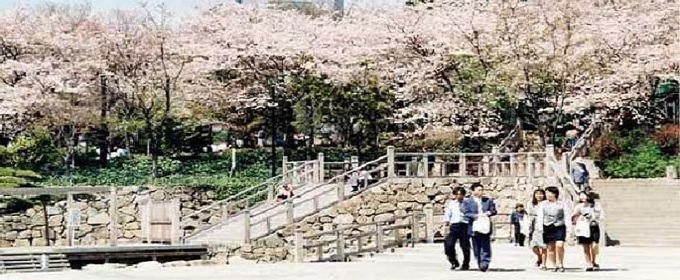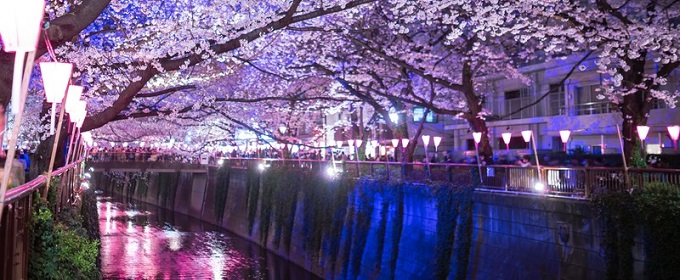- Top
- Culture
- Annual Event
- Hanami
Cherry-blossom viewing Hanami
Cherry-blossom viewing is Japanese culture!?
"Hanami" is a cherry-blossom viewing or going somewhere to view cherry-blossom. Cherry-blossom viewers drink and eat in the park or mountain with enjoying cherry-blossom. Some of them enjoy it without drinking and eating. The famous spot swarms with people during the cherry-blossom season. The season in Japan is from March to May, the season in Tokyo is from the end of March to the begining of April.
There is a cherry-blossom all over the world, but only Japanese view it with above custom. Some people view a cherry-blossom in Brazil, they are usually Japanese Brazilian. In addition, "Hanami" originally means viewing flowers because "Hana" maens flower and "mi" maens viewing in Japanese. However, Hanami means viewing only cherry-blossom in Japan. Why?

In Nara period(710-794), Hanami meant viwing not only cherry-blossoms but also plum blossoms, Hagi blossms(bush clover) and more. In Heian period(794-1185), Heian nobles loved it as a representative flower of spring. They also hold a party for composing a poem about it. Since then, Hana(flower) in spring maens cherry-blossom for Japanese.
In Edo period(1603-1868), Hanami permanated among the common people as an excursion of spring. They drank, ate, sang and danced with viewing cherry-blossoms. The spots of viewing it were increased by shogun who was was the military dictator of Japan. Tokugawa Iemitsu who was the thrid shogun of Edo period planted cherry trees in the riverside of Sumida river and Ueno park. Tokugawa Yoshimune who was eighth shogun also planted them and made Asukayama park known for cherry-blossoms spot.

There are many kind of cherry-trees in the world, but Somei-Yoshino species(Prunus yedoensis) account for 80% of all cherry-trees in Japan. Somei-Yoshino is mated Ooshima-sakura with Edo-higanzakura in Edo period. The other species are Yaezakura, Shidarezakura and more.
By the way, there is the custom that people eat a rice dumpling called Hanami-dango with viewing cherry-blossoms. Hanami-dango consits three color dumplings, white means snow to express passing winter, pink means cherry-blossoms and spring, green means an early sign of summer. Stalls and Japanese-style confectionary stores sell it for one or two dollars in the famous cherry-blossom spots.

Hanami bento lunch is also popular with viewing cherry-blossoms. It is packed with rice and spring dishes in multi-tiered bento box. Japanese restaurants sells it for ten or twenty dollars. Some people use food delivery service nowadays, Chinese, Italian, French and more.
There are many famous cherry blossom spot in Japan. Rikugien, Meguro river and Ueno park are famous in Tokyo. Rikugien made by Yanagisawa Yoshiyasu for seven years is the circuit style garden. Shidarezakura which is 15meters(about 50feets) tall blooms like a pink waterfall in this garden. About 800 Somei-Yoshino bloom in the riverside of Meguro river. Visitors can enojy not only just looking cherry blossoms but also river with petals and cherry blossoms reflected in the river.

About 800 Somei-Yoshino also bloom in the Ueno park. There is the Ueno zoo and some museum near the Ueno park, visitors can enjoy them after viewing cherry blossoms. Shinjyuku Gyoen, Sumida park, Yoyogi park are also known for cherry blossom spot of Tokyo.
You can experience Japanese culture through Hanami if you travel Japan from the end of March ot the begining of April.
 Opening Lake
Opening Lake April Fool's day
April Fool's day Hanami
Hanami Baseball
Baseball